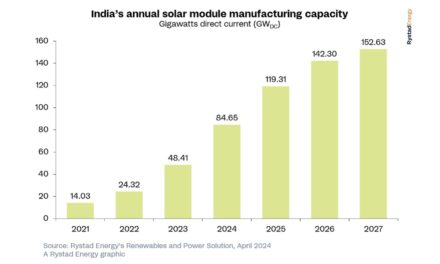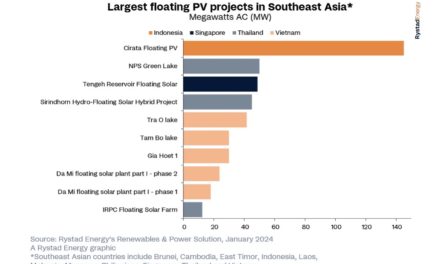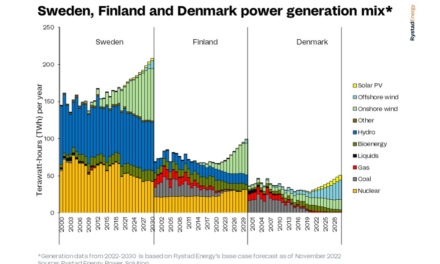- Rystad Energy says India installed 18.5 GW of new renewable energy capacity in FY 2023-24
- It includes 7.1 GW added in March 2024 alone, comprising 6.2 GW of solar PV capacity
- India needs to tackle grid and cost challenges to be able to add 30 GW of annual capacity to meet its 500 GW non-fossil fuel capacity goal
- Indian module producers are expected to offset their loss against cheaper Chinese suppliers in the Indian market by accessing the US market
India’s new renewable energy additions during FY 2023-24 (April 2023 to March 2024) achieved the highest-ever annual installed capacity, driven by solar energy. Out of 18.5 GW new capacity installed, solar PV accounted for 7.5 GW, according to Rystad Energy.
In the month of March 2024, Rystad says India added a record 7.1 GW of renewables capacity out of which more than 6.2 GW came from solar PV.
Solar energy installations went up by 23% annually during the financial year, thanks mainly to the accelerated commissioning of projects connected to the inter-state transmission system (ISTS). Major activity was witnessed in the states of Gujarat, Rajasthan, Madhya Pradesh and Maharashtra.
During Q1/2024, Adani Green Energy Limited brought online 1.6 GW of solar capacity in Kutch, Gujarat as part of its 30 GW hybrid renewable energy park for wind and solar technologies (see 1 GW Out Of 30 GW Renewable Energy Park In India Online).
Analysts point out that if India has to achieve its 500 GW non-fossil fuel energy generation (comprising solar PV, onshore wind, hydropower and nuclear energy) target by 2031-32, it needs to install around 30 GW annually.
However, to sustain the ‘fervor’ of recent months, India needs to tackle critical challenges such as ensuring grid stability and high integration costs as more renewable energy capacity comes online.
Rystad Energy’s Vice President of Renewables and Power Research, Rohit Pradeep Patel said, “A strategic solution lies in balancing this clean energy embrace with targeted exports, enabling India’s growth visions for the power sector, without compromising national climate goals.”
Additionally, the growth of solar power capacity has fueled the demand for modules. The Indian government wants to push domestic PV manufacturing, which has reportedly improved with schemes like the Production Linked Incentive (PLI) and Approved List of Models and Manufacturers (ALMM). As of March 2024, India’s total module manufacturing capacity increased to 68 GW DC, up from 48.41 GW DC at the end of 2023. Rystad expects it to further grow to exceed 84 GW DC in 2024, reaching 152.63 GW DC by 2027.
Recently, Mercom India Research said India brought online 20.8 GW module and 3.2 GW cell production capacity in 2023 (see India’s Solar Module Manufacturing Capacity Exceeds 64 GW).
However, India-produced modules are still not cost competitive vis-à-vis Chinese panels due to a lack of local upstream supply chain.
Indian modules are being shipped in droves to the US market, yet Southeast Asian nations that use cheaper-priced Chinese products to assemble modules score a win. As the US moratorium on circumvention tariffs expires in June 2024, Indian module producers may see an uptick in their fortunes, forecasts Rystad.
India is also considering other avenues to utilize its growing renewables capacity in the form of renewable power trading with the help of interconnector projects with the UAE, Saudi Arabia, Sri Lanka and Myanmar-Thailand. It may also expand to Singapore.
Rystad believes India can realize this potential only in the 2030s as interconnector projects are capital intensive and their construction timelines are as long as up to 5 years. Hence, India will likely be focused on meeting its domestic renewable energy targets until 2032.















